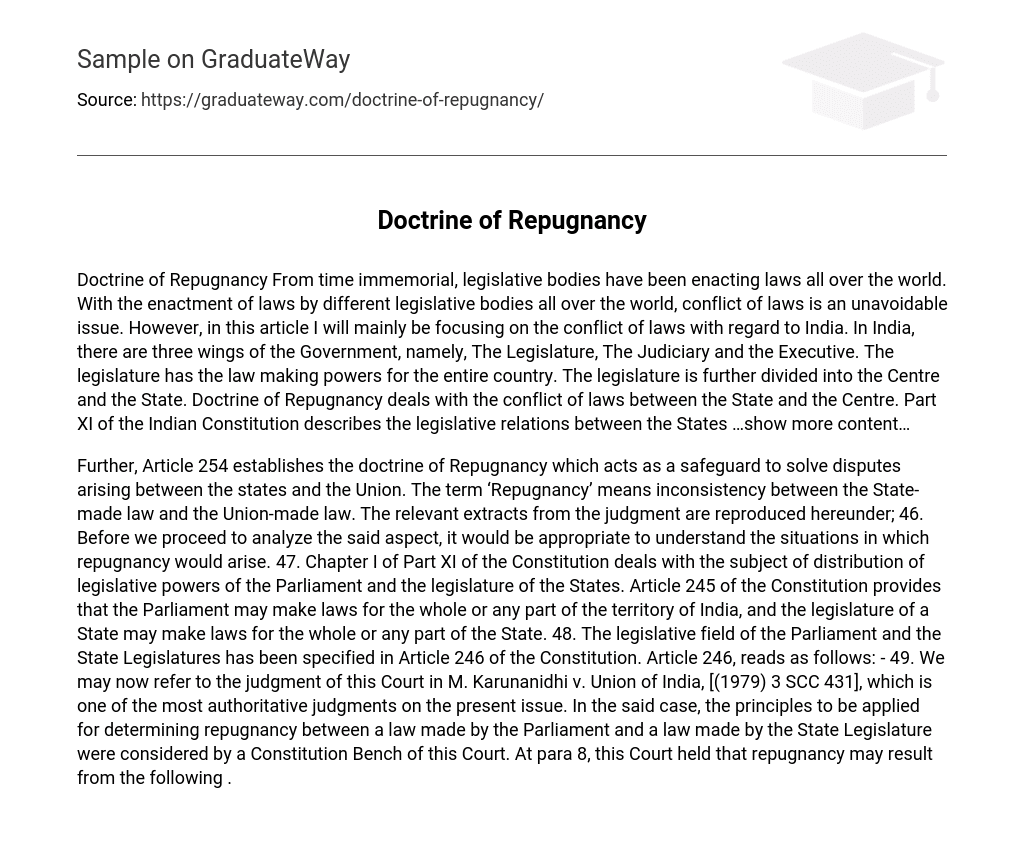Doctrine of Repugnancy From time immemorial, legislative bodies have been enacting laws all over the world. With the enactment of laws by different legislative bodies all over the world, conflict of laws is an unavoidable issue. However, in this article I will mainly be focusing on the conflict of laws with regard to India. In India, there are three wings of the Government, namely, The Legislature, The Judiciary and the Executive. The legislature has the law making powers for the entire country. The legislature is further divided into the Centre and the State. Doctrine of Repugnancy deals with the conflict of laws between the State and the Centre. Part XI of the Indian Constitution describes the legislative relations between the States …show more content…
Further, Article 254 establishes the doctrine of Repugnancy which acts as a safeguard to solve disputes arising between the states and the Union. The term ‘Repugnancy’ means inconsistency between the State-made law and the Union-made law. The relevant extracts from the judgment are reproduced hereunder; 46. Before we proceed to analyze the said aspect, it would be appropriate to understand the situations in which repugnancy would arise. 47. Chapter I of Part XI of the Constitution deals with the subject of distribution of legislative powers of the Parliament and the legislature of the States. Article 245 of the Constitution provides that the Parliament may make laws for the whole or any part of the territory of India, and the legislature of a State may make laws for the whole or any part of the State. 48. The legislative field of the Parliament and the State Legislatures has been specified in Article 246 of the Constitution. Article 246, reads as follows: – 49. We may now refer to the judgment of this Court in M. Karunanidhi v. Union of India, [(1979) 3 SCC 431], which is one of the most authoritative judgments on the present issue. In the said case, the principles to be applied for determining repugnancy between a law made by the Parliament and a law made by the State Legislature were considered by a Constitution Bench of this Court. At para 8, this Court held that repugnancy may result from the following .





